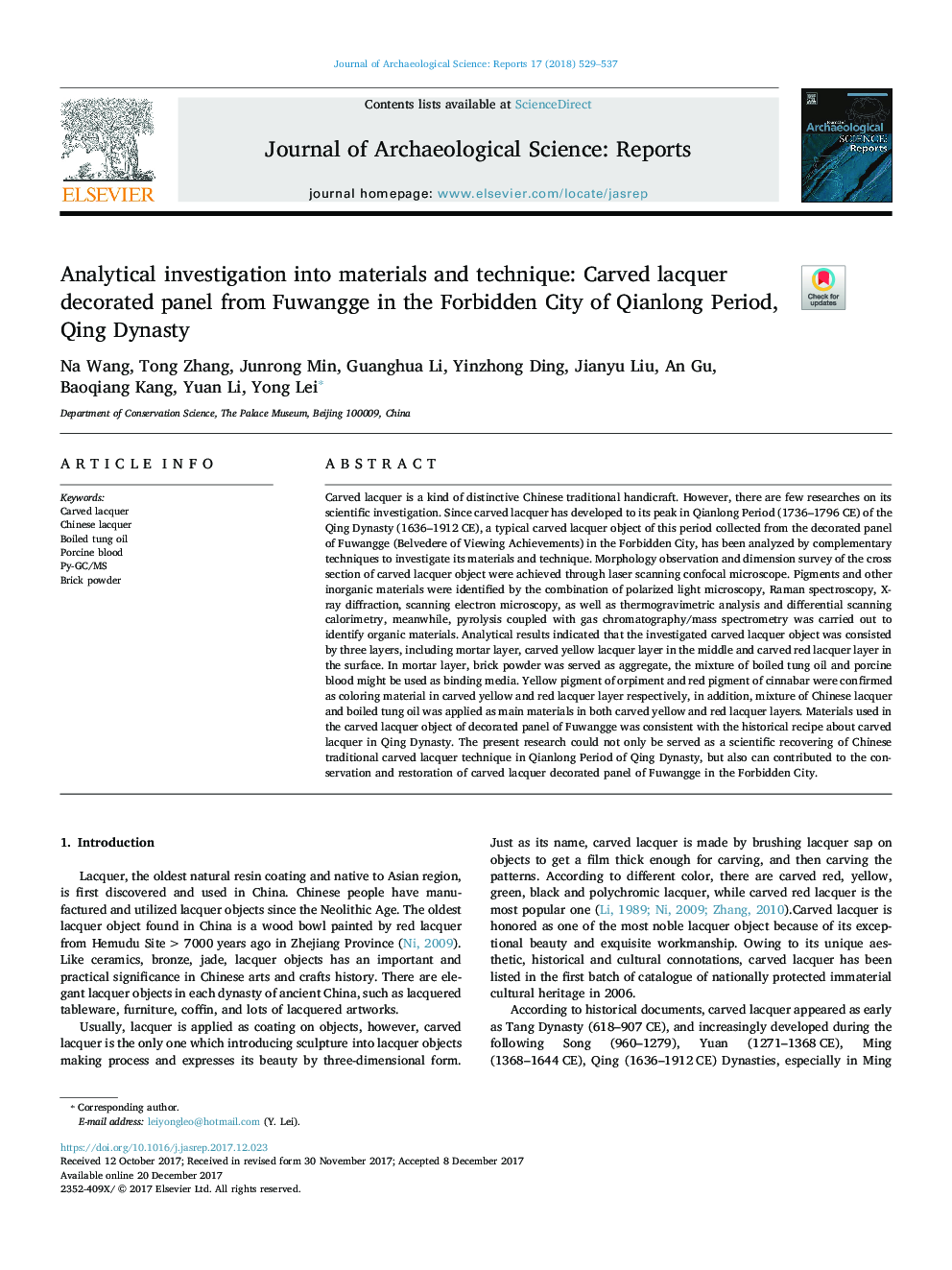| Article ID | Journal | Published Year | Pages | File Type |
|---|---|---|---|---|
| 7445219 | Journal of Archaeological Science: Reports | 2018 | 9 Pages |
Abstract
Carved lacquer is a kind of distinctive Chinese traditional handicraft. However, there are few researches on its scientific investigation. Since carved lacquer has developed to its peak in Qianlong Period (1736-1796Â CE) of the Qing Dynasty (1636-1912Â CE), a typical carved lacquer object of this period collected from the decorated panel of Fuwangge (Belvedere of Viewing Achievements) in the Forbidden City, has been analyzed by complementary techniques to investigate its materials and technique. Morphology observation and dimension survey of the cross section of carved lacquer object were achieved through laser scanning confocal microscope. Pigments and other inorganic materials were identified by the combination of polarized light microscopy, Raman spectroscopy, X-ray diffraction, scanning electron microscopy, as well as thermogravimetric analysis and differential scanning calorimetry, meanwhile, pyrolysis coupled with gas chromatography/mass spectrometry was carried out to identify organic materials. Analytical results indicated that the investigated carved lacquer object was consisted by three layers, including mortar layer, carved yellow lacquer layer in the middle and carved red lacquer layer in the surface. In mortar layer, brick powder was served as aggregate, the mixture of boiled tung oil and porcine blood might be used as binding media. Yellow pigment of orpiment and red pigment of cinnabar were confirmed as coloring material in carved yellow and red lacquer layer respectively, in addition, mixture of Chinese lacquer and boiled tung oil was applied as main materials in both carved yellow and red lacquer layers. Materials used in the carved lacquer object of decorated panel of Fuwangge was consistent with the historical recipe about carved lacquer in Qing Dynasty. The present research could not only be served as a scientific recovering of Chinese traditional carved lacquer technique in Qianlong Period of Qing Dynasty, but also can contributed to the conservation and restoration of carved lacquer decorated panel of Fuwangge in the Forbidden City.
Keywords
Related Topics
Social Sciences and Humanities
Arts and Humanities
History
Authors
Na Wang, Tong Zhang, Junrong Min, Guanghua Li, Yinzhong Ding, Jianyu Liu, An Gu, Baoqiang Kang, Yuan Li, Yong Lei,
